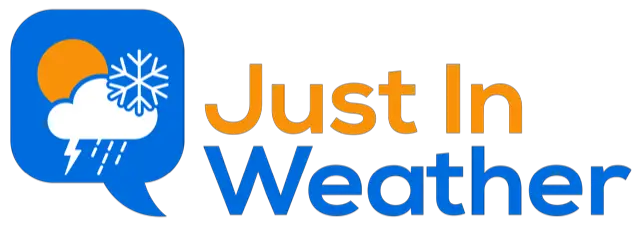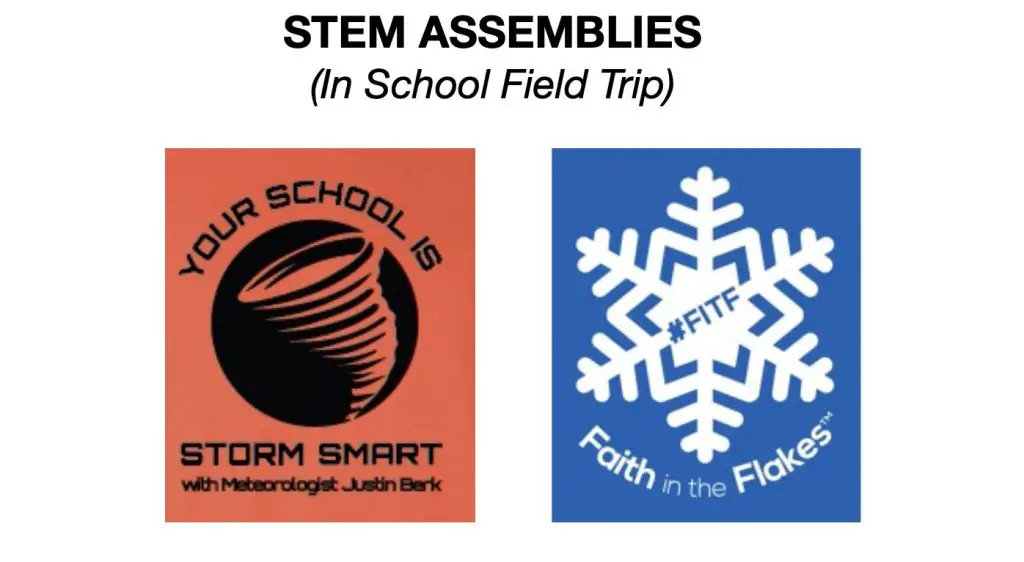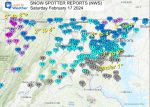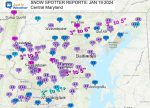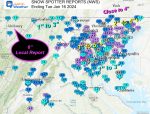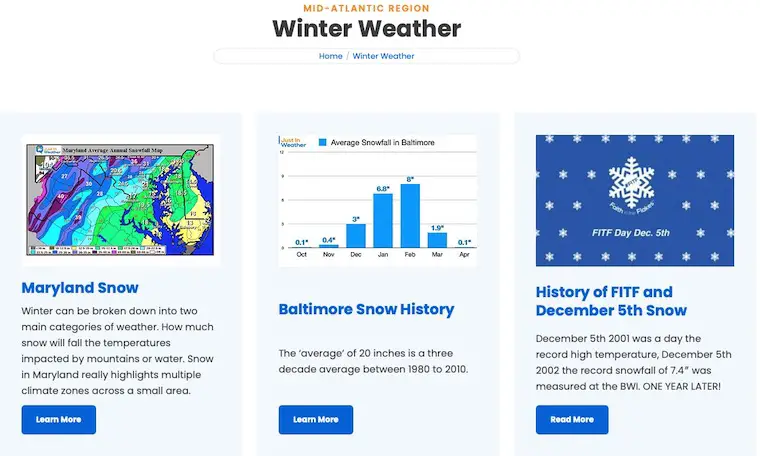This 2024 Solar Eclipse Is A Big Deal: Notes For Viewing Total And Partial Coverage
April 1, 2024
We are now within one week from the ultimate sky show here in the US. The 2024 total solar eclipse will occur during the afternoon of Monday, April 8. Personally, I got to witness the 2017 event with my family and friends. It was more spectacular than I expected. That is why I will be traveling to see totality again. My group will be smaller, but the rest will be with us in spirit. See our photos and more below.
I want to share my experience with you, along with some additional information about the event. By comparison, this year will be bigger and better. The reason is that the moon will be closer, so the shadow and coverage area will be larger. Also, the path travels over a greater population, allowing more people to witness it.
The greatest impact will be in the path of totality. If you are in the partial eclipse area, the experience will be very different, however, you will still get to experience some cool things.
As for the weather, it is too early! I would not put too much weight into cloud cover forecasting for the event until less than 4 days away. So, by Thursday, we can begin to get an idea of both the optimal and marginal spots along the path.
Simply Put: Describing How A Solar Eclipse Works
When the moon aligns in the path between the sun and Earth, the shadow on Earth is the eclipse.
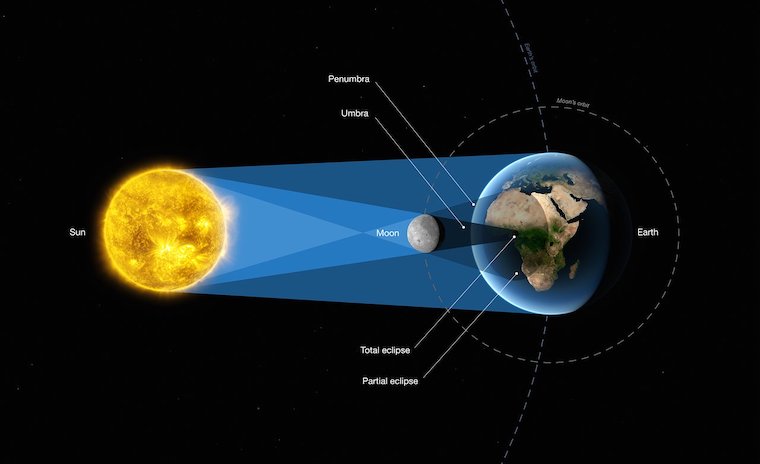
2017 Eclipse Composite Photo
From Greenville, SC
Credit: Nick Proudfoot: Proud Designs Jewelry
A bunch of THANKS to Sarah Bunch for connecting me for this view.
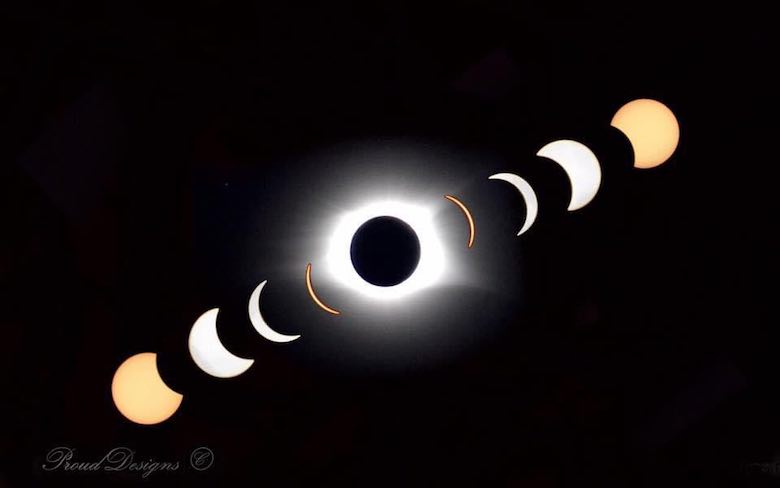
2017 Eclipse Timelapse Video
This is amazing to see the dramatic change with 100% coverage.
Fact: You can take your glasses off ONLY when total blockage of the sun is taking place. The view will be like this: a black disk with the bright light of the corona flaring out of the edges.
My 2017 Eclipse Experience
My family and my friends family rented a van, and we drove 13 hours from Ocean City, MD, to Columbia, SC.
We parked at a hotel by a Chick-fil-A to have food and restrooms while we stayed all day. Honestly, restrooms and fresh food are important! Besides, you will be looking up. All you need there is no obstructions and hopefully no clouds.
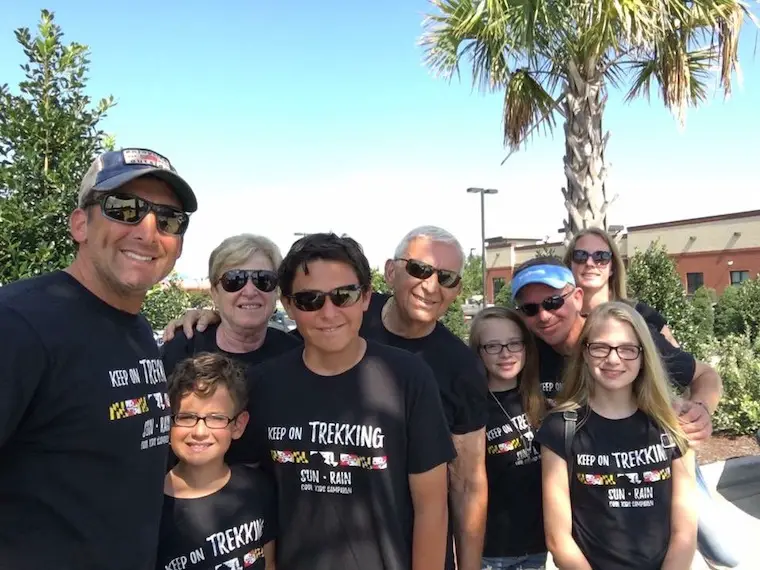
Shadows Show The Coverage
This is IMPORTANT if you are in the area that will be in partial coverage.
If you are near trees with leaves out, or can use a spaghetti strainer, you will see the partial sun in the shadows like we got here.
Suggestion: Bring a spaghetti strainer, and you will be able to see the shadows on the ground with a little more focus and definition.
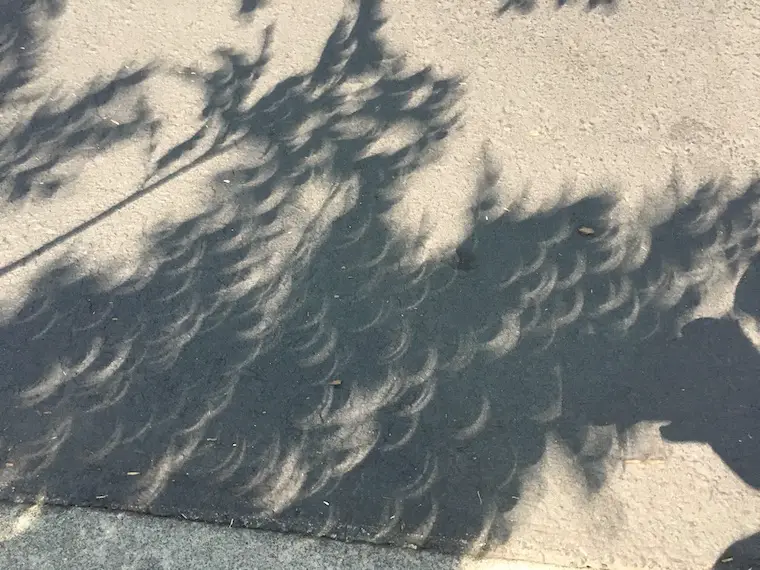
Totality
IT IS OK TO TAKE GLASSES OFF ONLY IN TOTAL ECLIPSE
This is safe only in the 100% coverage area and allows for the full experience. Photo from Nick Proudfoot.
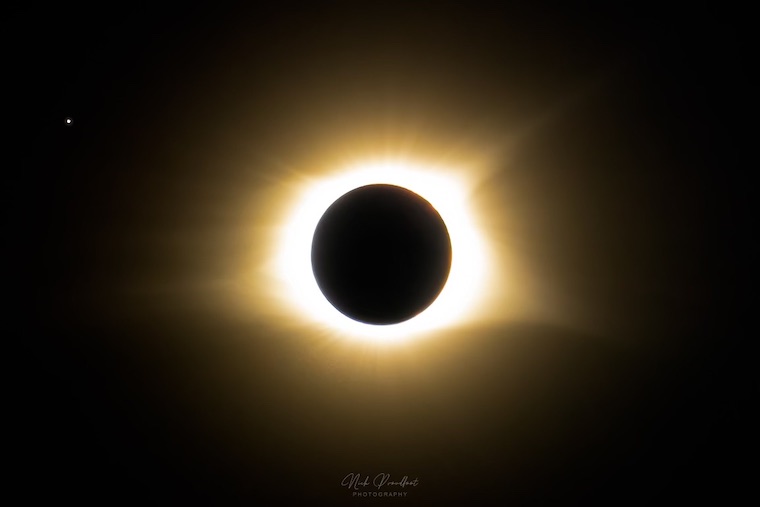
GROUP PHOTO
During the total eclipse, the street and building lights came on automatically.
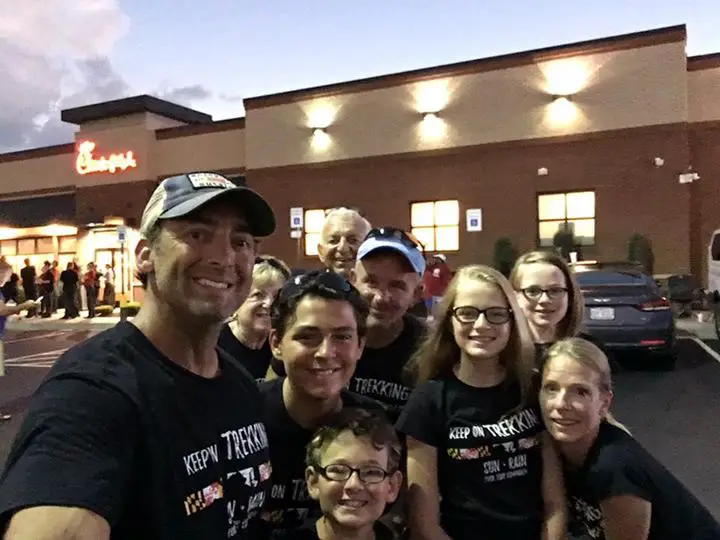
NOT LIKE MIDNIGHT
While the disk of the moon in front of the sun will be black, there will be light from the corona.
Looking around the horizon, there was an orange glow more like dusk.
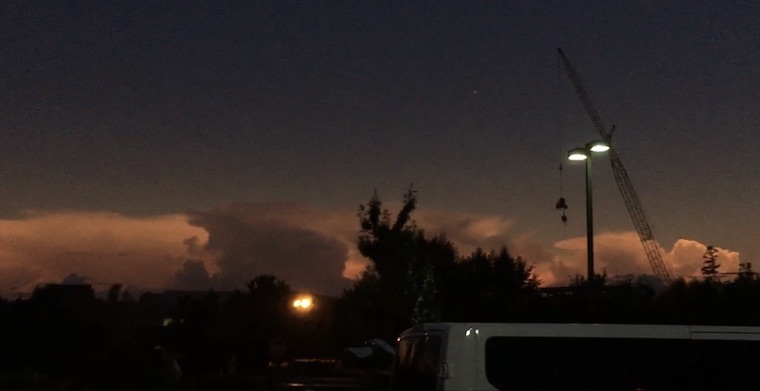
Comparing the 2017 to 2024 Solar Eclipse
Shadow Traveling Speed
- 1,500 mph
Shadow of Totality Comparison
Width
- 2017 = 62 to 71 miles
- 2024 = 108 to 122 miles. This will be larger!!!
Population In The Path
2017 = 22 million
2024 = 31.6 million
Lucky Dogs: Crossroads of Both Eclipses
Another effect of all this is that the 2017 and 2024 eclipses cross paths, creating an “Eclipse Crossroads” area of about 9,000 square miles (14,500 square km) in parts of southeastern Missouri, southern Illinois and western Kentucky that will experience a second totality in less than seven years.
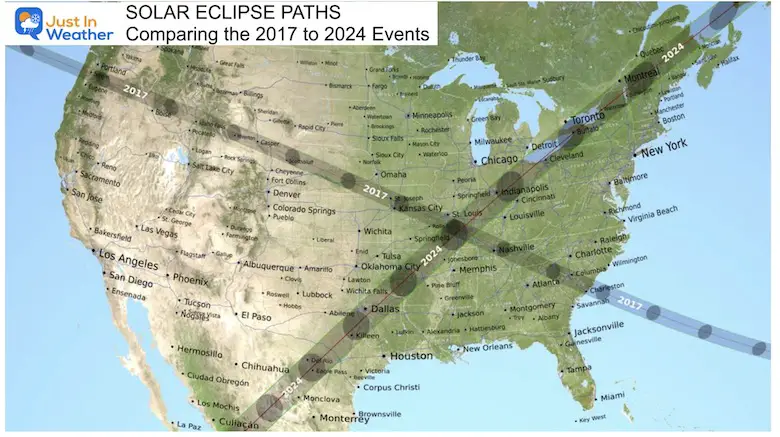
2024 NOTES
Totality Shadow Duration
As the shadow moves Northeast, the length of time will grow shorter.
Texas about 4 min 26 seconds
- Dallas: Begins at 1:40 PM EDT
Economy, Indiana = 4 minutes long
- Begins at 3:05 PM
An additional 150 million live within 200 miles.
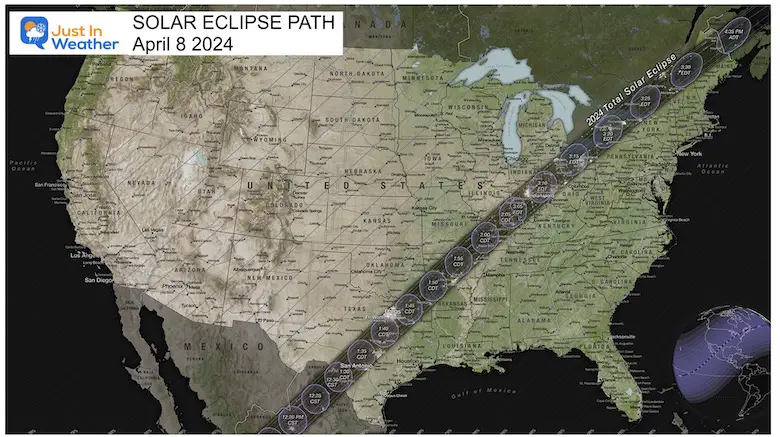
Local Look
Duration close to 3 min 20 seconds
- Cleveland, OH (3:15 PM EDT)
- Buffalo/Rochester, NY (3:20 PM)
- Burlington, VT (3:26 PM)
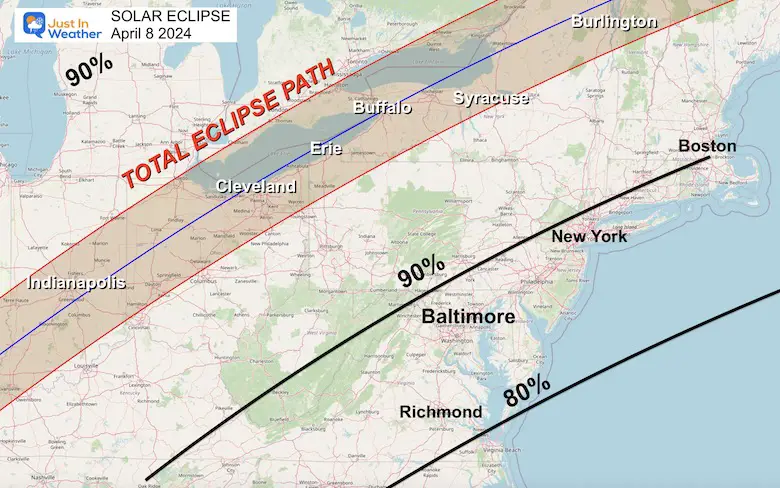
What To Expect Near Baltimore
KEEP YOUR ECLIPSE GLASSES ON THE ENTIRE TIME
This applies to most of the Mid-Atlantic region, where the moon will block between 80% and 90% of the sun.
I am sorry to say that the view around you will be similar to 50% coverage.
If you were in a similar location in 2017, you might recall a slight dimming of the ambient light. Maybe even the crescent shadow on the ground.
Timing:
- Begins at 2:05 PM
- Peak Coverage at 3:21 PM
- Ends at 4:33 PM
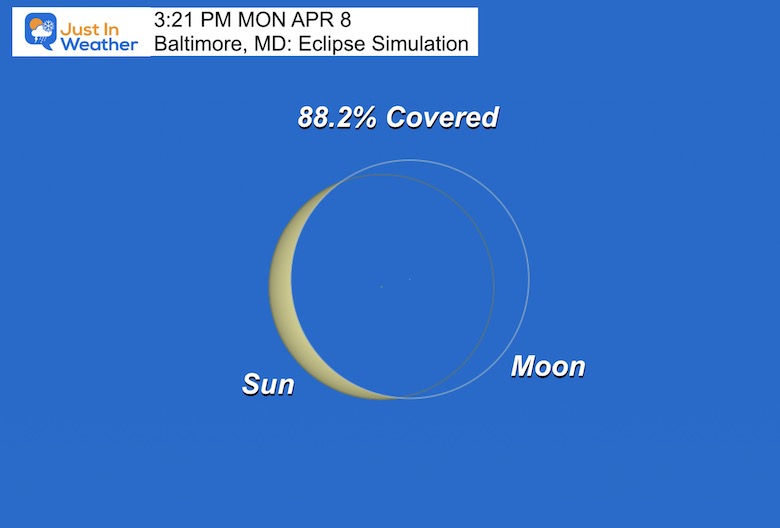
Viewing Tips
View the Sun through eclipse glasses or a handheld solar viewer during the partial eclipse phases before and after totality.
You can view the eclipse directly without proper eye protection only when the Moon completely obscures the Sun’s bright face – during the brief and spectacular period known as totality. (You’ll know it’s safe when you can no longer see any part of the Sun through eclipse glasses or a solar viewer.
As soon as you see even a little bit of the bright Sun reappear after totality, immediately put your eclipse glasses back on or use a handheld solar viewer to look at the Sun.
Photographer Tips
Do NOT use eclipse glasses or handheld viewers with cameras, binoculars, or telescopes. Those require different types of solar filters. When viewing the partial phases of the eclipse through cameras, binoculars, or telescopes equipped with proper solar filters, you do not need to wear eclipse glasses. (The solar filters do the same job as the eclipse glasses to protect your eyes.)
How To Photograph
From Space.com
https://www.space.com/how-to-photograph-a-solar-eclipse
STEM Assemblies/In School Fields Trips Are Back
Click to see more and ‘Book’ a visit to your school
Please share your thoughts and best weather pics/videos, or just keep in touch via social media
-
Facebook: Justin Berk, Meteorologist
-
Twitter
-
Instagram
RESTATING MY MESSAGE ABOUT DYSLEXIA
I am aware there are some spelling and grammar typos and occasional other glitches. I take responsibility for my mistakes and even the computer glitches I may miss. I have made a few public statements over the years, but if you are new here, you may have missed it: I have dyslexia and found out during my second year at Cornell University. It didn’t stop me from getting my meteorology degree and being the first to get the AMS CBM in the Baltimore/Washington region.
One of my professors told me that I had made it that far without knowing and to not let it be a crutch going forward. That was Mark Wysocki, and he was absolutely correct! I do miss my mistakes in my own proofreading. The autocorrect spell check on my computer sometimes does an injustice to make it worse. I also can make mistakes in forecasting. No one is perfect at predicting the future. All of the maps and information are accurate. The ‘wordy’ stuff can get sticky.
There has been no editor who can check my work while writing and to have it ready to send out in a newsworthy timeline. Barbara Werner is a member of the web team that helps me maintain this site. She has taken it upon herself to edit typos when she is available. That could be AFTER you read this. I accept this and perhaps proves what you read is really from me… It’s part of my charm. #FITF
Recent Snow Reports
Click each map for the maps and snow spotter lists.
February 17 Snow Report Maps
February 13 Snow Report Maps
January 19 Recap
Click here for the maps and full report
Jan 16 Snow Report
Click here or the map to see: The Snow Report Ending Jan 16
Subscribe for eMail Alerts
Weather posts straight to your inbox
Sign up and be the first to know!



